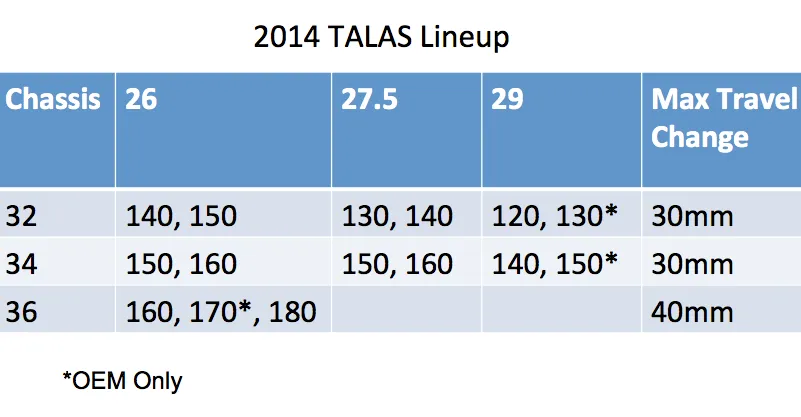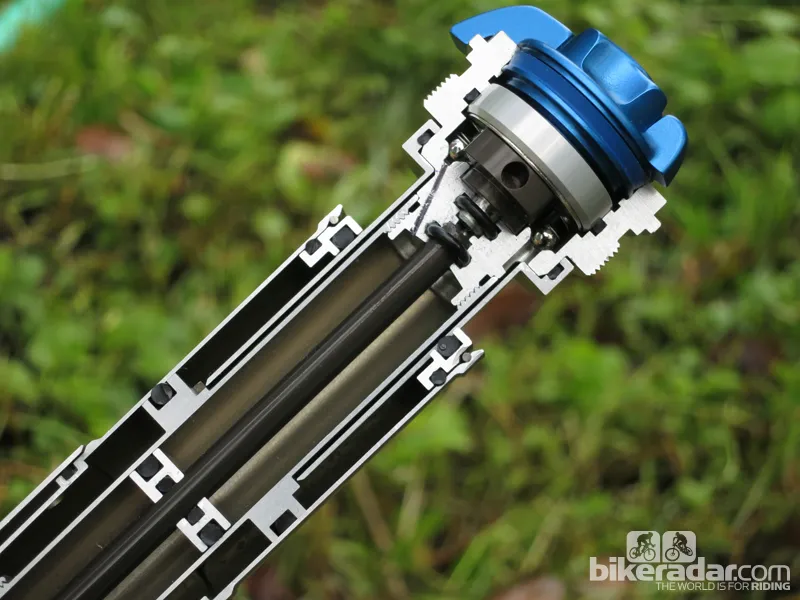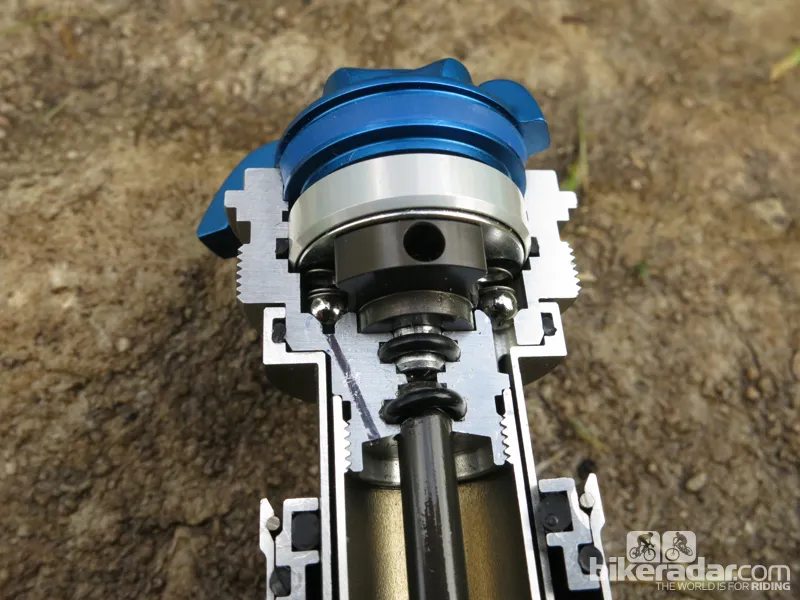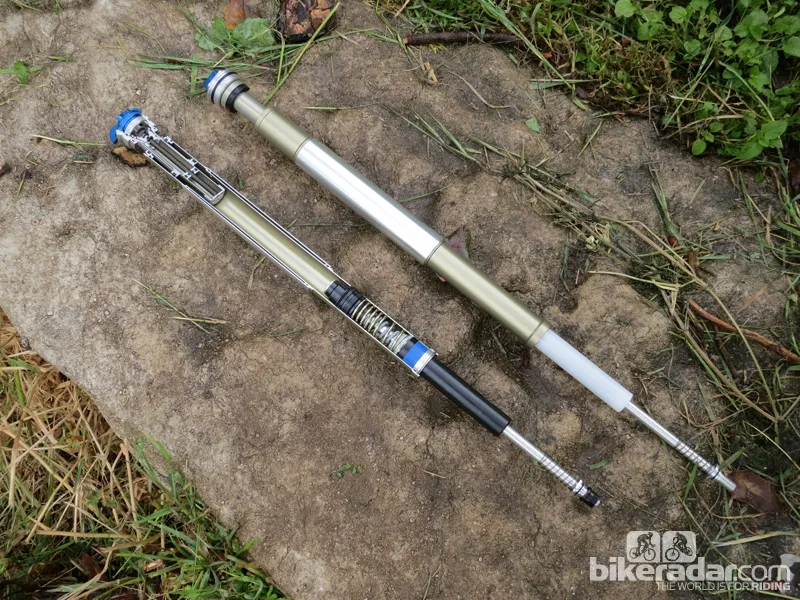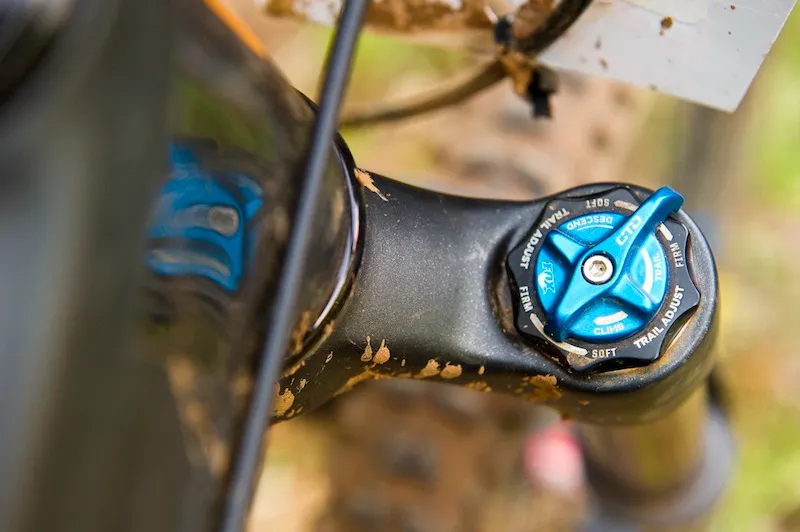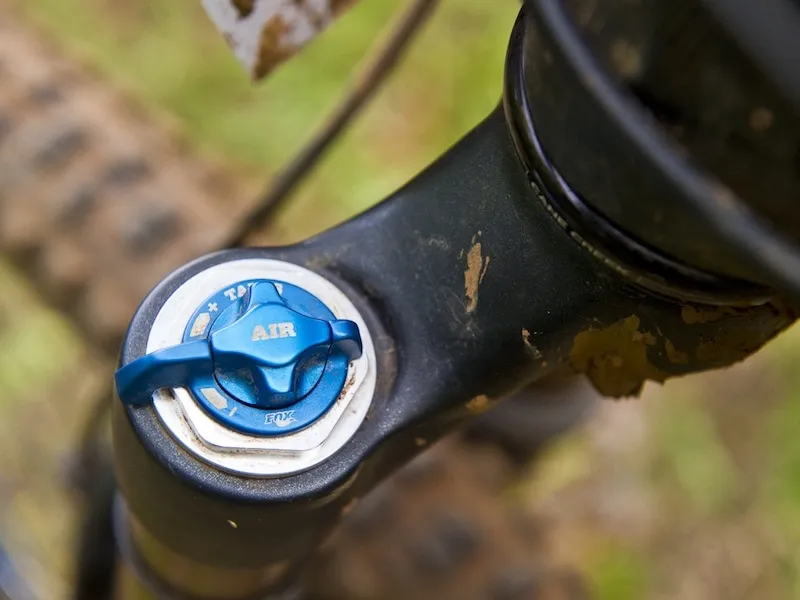Two of the most notable additions to Fox Racing Shox 2014 line are the revised TALAS suspension fork and the new Float X rear shock. (Click here to read our review of the new Float X shock .) BikeRadar tested both components over several days of riding and racing in Hood River, Oregon—the first stop on this season’s Oregon Enduro Series.
Fox Racing Shox’s family of adjustable-travel suspensions forks have gone through several revisions over the years, none of which have been as sweeping as what Fox has done to the TALAS line for 2014.
Fox 160mm TALAS CTD FIT
- Pros: Plush and controlled suspension; improved damping; available in all three wheel sizes and three stanchion diameters
- Cons: Travel adjust may be a superfluous feature for well-designed trail bikes
- Price: US$1,120/£1,020
- Weight: 4.4lb/2kg
- More information: www.ridefox.com
Reinventing the TALAS
Past TALAS forks suffered from a lack of support through the mid-stroke, resulting in a tendency to dive under hard braking, and excessive seal drag that stands in stark contrast to the rest of Fox’s supple suspension forks.
TALAS stands for Travel Adjustable Linear Air Spring, and while the name remains, the spring curve is not linear. Fox engineers developed an entirely new adjustable-travel air spring that closely resembles those used in Float forks.There is a gradual progression in the initial two-thirds of the stroke before the spring rate ramps up near the end of the stroke provide more bottom our support.
The previous system used three seals in the air spring assembly. The new TALAS system does away with two of the three air seals, which dramatically cuts down on the amount of drag.
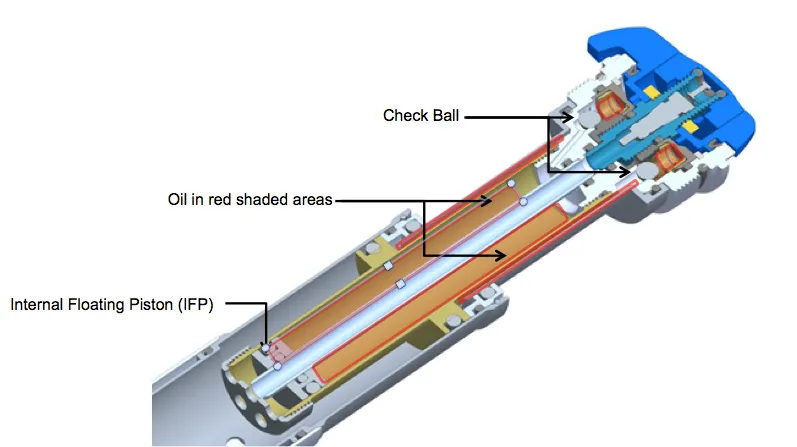
The new TALAS uses a two-position hydraulic travel adjuster. Two check balls regulate the flow of oil in each travel settings. Users can easily increase or decrease (depending on the specific fork model) the difference in travel between the high and low position in 5mm increments thanks to plastic clip-on travel spacers.
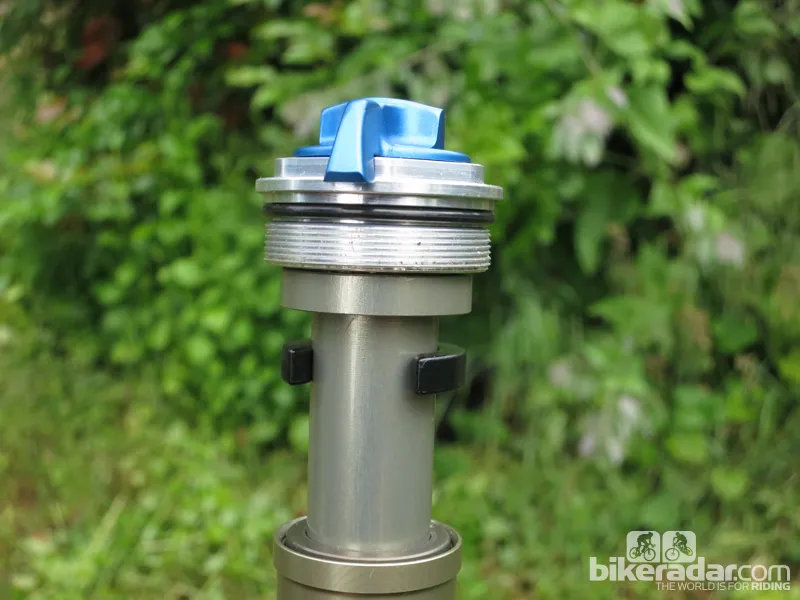
Simply unthread the top cap and add or subtract spacers as desired to change the difference in travel between the high and low settings
Shuttle bumpers, located near the bottom of the air spring assembly, can be added or subtracted to adjust the total range of travel in 10mm increments. By adding a 10mm shuttle bumper decreases the total range of travel from 160mm to 150mm. The difference in travel remains 30mm—changing from 130mm to 120mm in the low setting.
Ride impressions
Fox mechanics mounted the 160mm-travel, 650b (27.5in) fork to our Santa Cruz Bronson test bike. Since this tester was already well acquainted with the bike the performance differences between the stock 150mm-travel Fox 34 Float CTD FIT and the 160mm-travel 34 TALAS CTD FIT were immediately apparent and, thankfully, very minor.
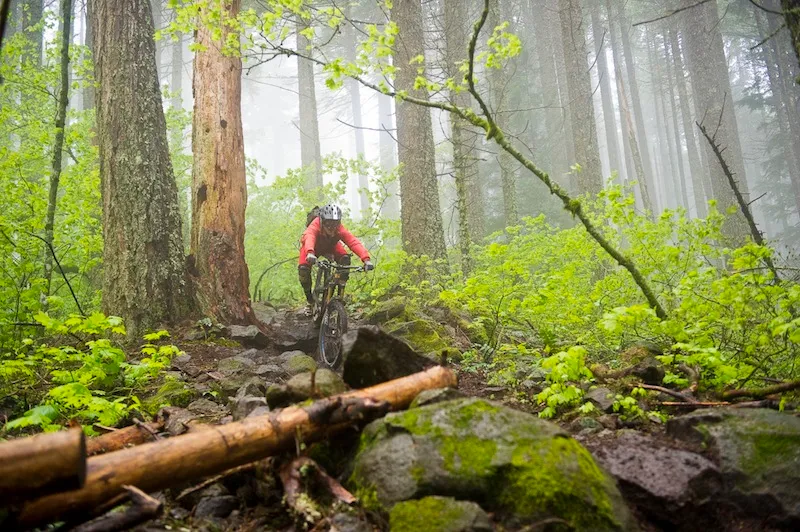
On the trail the new TALAS feels much like the Float
The greatest compliment we can give the new fork is that, if not for the on-the-fly travel adjuster, we would have thought we were still riding a Float. Not having to make sacrifices in terms of suspension feel for the sake of adjustable travel makes the 2014 TALAS a huge improvement over its predecessors.
The excessive seal drag that plagued past TALAS forks is gone. The spring curve mimics the 2014 Float line, which is firmer than past years, providing more support to keep the fork riding higher its travel.
The new TALAS firms up slightly when the fork is dropped from 160mm to 130mm, though it still performs with the same feeling of gradual progression through the stroke.
While the ability to drop the front end is a nice, particularly when it doesn’t come at the expense of all-around performance, it may also be an unnecessary feature for trail bikes that already have outstanding all-around performance.
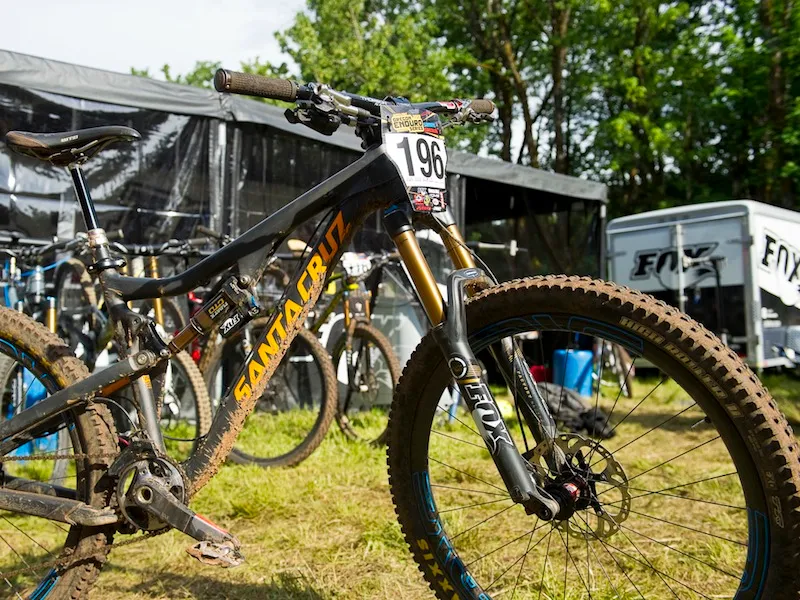
Our Bronson tester is one such bike; it climbs remarkably well with the TALAS fully extended. However, dialing the travel down to 130mm does allow the rider to navigate steep, technical climbs with less rider input.
The question of weather or not the adjustable travel is a feature worth an additional 40g and US$118/£105 (for the 650b model tested here) is one that is dependent on the bike your ride and the trails you frequent.
